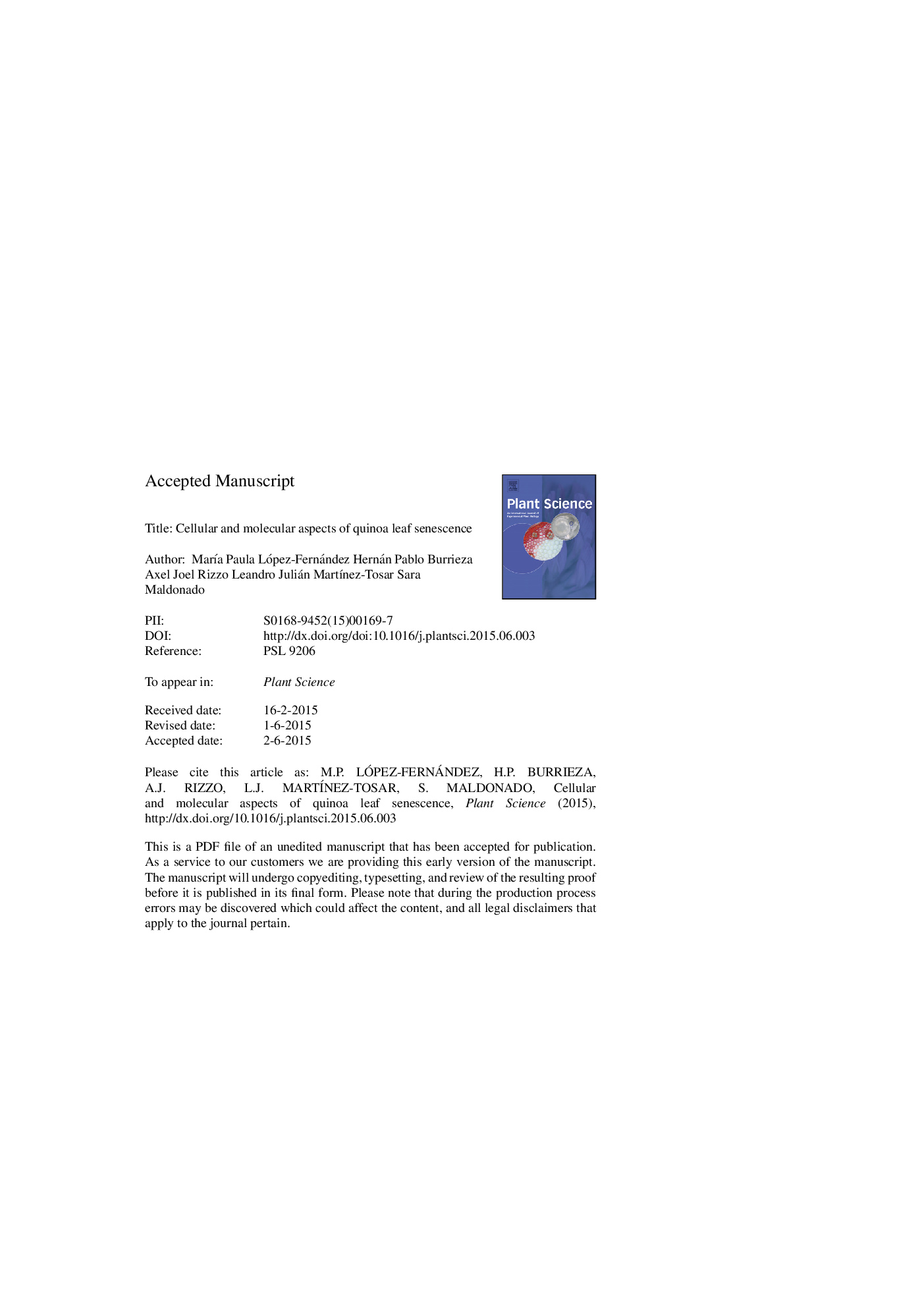| کد مقاله | کد نشریه | سال انتشار | مقاله انگلیسی | نسخه تمام متن |
|---|---|---|---|---|
| 8357636 | 1542051 | 2015 | 31 صفحه PDF | دانلود رایگان |
عنوان انگلیسی مقاله ISI
Cellular and molecular aspects of quinoa leaf senescence
ترجمه فارسی عنوان
جنبه های سلولی و مولکولی از پیری برگ کویینا
دانلود مقاله + سفارش ترجمه
دانلود مقاله ISI انگلیسی
رایگان برای ایرانیان
کلمات کلیدی
موضوعات مرتبط
علوم زیستی و بیوفناوری
علوم کشاورزی و بیولوژیک
دانش گیاه شناسی
چکیده انگلیسی
During leaf senescence, degradation of chloroplasts precede to changes in nuclei and other cytoplasmic organelles, RuBisCO stability is progressively lost, grana lose their structure, plastidial DNA becomes distorted and degraded, the number of plastoglobuli increases and abundant senescence-associated vesicles containing electronically dense particles emerge from chloroplasts pouring their content into the central vacuole. This study examines quinoa leaf tissues during development and senescence using a range of well-established markers of programmed cell death (PCD), including: morphological changes in nuclei and chloroplasts, degradation of RuBisCO, changes in chlorophyll content, DNA degradation, variations in ploidy levels, and changes in nuclease profiles. TUNEL reaction and DNA electrophoresis demonstrated that DNA fragmentation in nuclei occurs at early senescence, which correlates with induction of specific nucleases. During senescence, metabolic activity is high and nuclei endoreduplicate, peaking at 4Â C. At this time, TEM images showed some healthy nuclei with condensed chromatin and nucleoli. We have found that DNA fragmentation, induction of senescence-associated nucleases and endoreduplication take place during leaf senescence. This provides a starting point for further research aiming to identify key genes involved in the senescence of quinoa leaves.
ناشر
Database: Elsevier - ScienceDirect (ساینس دایرکت)
Journal: Plant Science - Volume 238, September 2015, Pages 178-187
Journal: Plant Science - Volume 238, September 2015, Pages 178-187
نویسندگان
MarÃa Paula López-Fernández, Hernán Pablo Burrieza, Axel Joel Rizzo, Leandro Julián MartÃnez-Tosar, Sara Maldonado,
